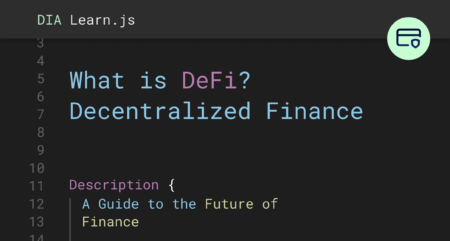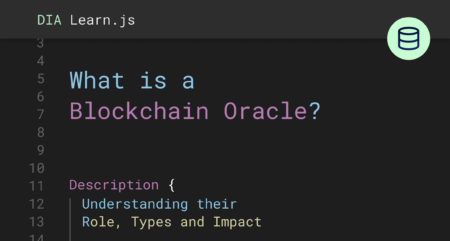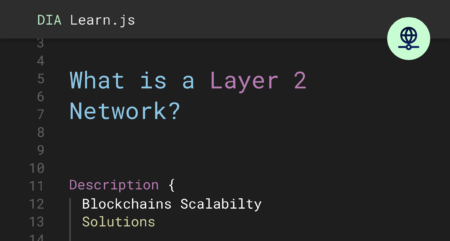What is a dApp – Understanding Decentralized Applications
Uncover the essentials of decentralized applications: Explore how dApps revolutionize finance and technology in our detailed guide.

What are Decentralized Applications (dApps)?
Decentralized applications (dApps) are software applications operating on a decentralized network to bypass the need for central authority. Unlike conventional apps dependent on centralized servers, dApps leverage distributed blockchain networks where users are both consumers and contributors. This model promotes transparency and offers users unparalleled self-custody of their assets, as all network participants possess a copy of the app and play an active role in its operation.
A key advantage of this decentralized framework is the efficient and cost-effective execution of transactions, achieved through the use of Smart contracts. These self-executing code segments eliminate the need for middlemen entities, as they automate processes and directly engage with the blockchain network. This approach not only reduces the overall costs by avoiding third-party fees but also speeds up transactions. The absence of intermediaries in conjunction with Smart contracts ensures a smoother, faster, and more economically efficient transaction process.
Popular dApps and Their Unique Offerings
The world of decentralized applications (dApps) is rich and varied, with several standout examples that have gained popularity due to their unique features and the novel use cases they enable, which are often not possible with centralized or traditional real-world applications.
Aave:
- Unique Offering: Aave is a decentralized finance (DeFi) protocol that allows users to lend and borrow cryptocurrencies without a central authority.
- Enabling Novel Use Cases: It democratizes the lending and borrowing process, enabling users to participate without the need for traditional banking systems. Aave’s smart contracts automate the process, providing more transparent, efficient, and accessible financial services.
MakerDAO and DAI:
- Unique Offering: MakerDAO is a decentralized credit platform that manages the stablecoin DAI, which is pegged to the US dollar but operates entirely on the blockchain.
- Enabling Novel Use Cases: This system allows for the creation of a stable digital currency without reliance on centralized banks. It’s particularly significant for users in unstable economies, offering a stable and decentralized alternative to traditional fiat currencies.
Uniswap:
- Unique Offering: Uniswap is a decentralized exchange (DEX) that allows for the automated trading of decentralized finance tokens.
- Enabling Novel Use Cases: It employs a unique automated liquidity protocol, different from traditional exchanges. Users can swap various cryptocurrencies without an intermediary, enhancing privacy and reducing counterparty risks common in traditional finance.
Compound:
- Unique Offering: Compound is an algorithmic, autonomous interest rate protocol, allowing users to deposit cryptocurrencies and earn interest or take out a secured loan.
- Enabling Novel Use Cases: Unlike traditional financial systems where interest rates are set by institutions, Compound’s rates are algorithmically determined by supply and demand in the market, providing a more dynamic and open financial system.
Curve Finance:
- Unique Offering: Curve is a decentralized exchange optimized for stablecoin trading, offering low slippage and minimal fees.
- Enabling Novel Use Cases: Curve facilitates efficient stablecoin trading, which is not typically feasible in traditional finance due to high costs and regulatory hurdles. This opens up more opportunities for arbitrage and less volatile cryptocurrency trading.
Each of these dApps showcases the innovative potential of decentralized technologies. They offer solutions that extend beyond the capabilities of traditional centralized systems, providing more open, inclusive, and efficient alternatives.
Core Components of dApps

Frontend
The frontend of a dApp is its user interface, created using web technologies and frameworks for enhanced responsiveness. Key libraries like Web3.js or Ethers.js are essential for backend communication, transaction management, and wallet integration.
Hosting
In dApp hosting, decentralization is key, distributing files across a network to enhance security and reduce failure risks. While many dApps still use centralized hosting, decentralized options like IPFS, Swamp or Fleek are becoming more popular.
Wallets
Wallets in dApps handle digital asset management and user authentication, offering a variety of types for security and convenience. The choice between browser extension wallets like MetaMask, TrsutWallet or WalletConnectand versus non-custodial wallets, depends on user preference and security needs.
Nodes
Also known as RPCs, nodes are crucial for validating and relaying blockchain transactions, with options for remote access or self-hosting. They support both read and write operations, with some services even covering transaction fees for users. Popular Node providers include Alchemy, QuickNode, Blast API or Infura.
Smart Contracts
Smart Contracts form the operational backbone of dApps, with upgradable contracts providing flexibility for updates. Cross-chain interactions and bridge implementations are vital for expanding a dApp’s capabilities.
Indexing Solutions
Indexing solutions like The Graph or Subsquid optimize data retrieval from blockchains, ensuring efficiency and real-time synchronization. These solutions are crucial for dApps to respond promptly to blockchain events.
Data Storage
Decentralized data storage solutions like IPFS are preferred in dApps for scalability and cost-effectiveness, especially for large data volumes. These solutions maintain data privacy and integrity, complementing blockchain transactional data storage.
Oracles
Blockchain Oracles are essential for dApps requiring real-world data inputs, providing off-chain data to smart contracts., crucial to enable use cases such as lending and borrowing, on-chain derivatives and many more. DIA, a leading oracle provider, delivers price feeds for over 20,000 tokens including cryptocurrencies, NFTs, and other services like randomness.
What Are the Benefits of Using Decentralized Applications?
The rise of decentralized applications (dApps) brings with it a host of benefits, distinguishing them from their centralized counterparts. These advantages are primarily derived from their underlying blockchain technology.
Key Benefits
- User Empowerment: Users have greater control over their data as well as asset, thanks to the decentralized structure.
- Enhanced Security: The decentralized nature of blockchain makes dApps more resilient to hacking and fraud.
- Transparency: Every transaction on a dApp is recorded on the blockchain and openly available to verify, ensuring complete transparency.
- No Central Point of Failure: Unlike centralized apps, dApps do not have a single point of failure, making them more reliable.
- Censorship Resistance: dApps are less susceptible to censorship or control by any single authority.
Economic Advantages
- Reduced Costs: By eliminating intermediaries, dApps can significantly lower transaction fees.
- Tokenization: Many dApps incorporate token economies, allowing users to benefit financially from participation.
Social and Cultural Impact
- Inclusivity: dApps can offer services to unbanked populations, promoting financial inclusion.
- Innovation: The open-source nature fosters a collaborative environment for continuous improvement and innovation.
Example: Total Value Locked in Ethereum dApps
What Are the Challenges Associated with Developing and Using dApps?
While dApps offer significant advantages, they also present unique challenges in both development and usage.
Development Challenges
- Technical Complexity: Building on blockchain technology requires specialized knowledge and skills.
- Security Concerns: dApps, being open-source and decentralized, are susceptible to security vulnerabilities.
- Scalability: Handling a large number of transactions efficiently remains a significant challenge.
User-Related Challenges
- User Experience: dApps can be less intuitive than traditional apps, posing a barrier to widespread adoption.
- Gas Fees: The cost of transactions can be a deterrent, especially during periods of network congestion.
- Regulatory Uncertainty: The evolving landscape of blockchain regulation poses challenges for developers and users alike.
Despite these challenges, the continued development and refinement of dApps are leading to more robust, user-friendly, and secure applications, broadening their appeal and utility.
How Can Users Interact with dApps?
Interacting with decentralized applications (dApps) involves a few steps and tools different from those used in traditional applications. This process emphasizes user autonomy and security.
Steps and Tools for dApp Interaction:
- Digital Wallets: Necessary for managing cryptocurrencies and tokens used in dApps.
- Web3 Browsers or Extensions: These allow browsers to interact with the blockchain, like MetaMask or Trust Wallet.
- dApp-Specific Interfaces: Each dApp has its user interface, whether a web application or a mobile app.
User Experience Considerations:
- Transaction Signatures: Users often need to sign transactions, granting explicit permission for actions within a dApp.
- Gas Fees: Transactions on blockchain networks typically require fees, known as gas, which can vary based on network congestion.
Understanding these tools and processes is key to a seamless dApp experience, emphasizing the decentralized and secure nature of these applications.







